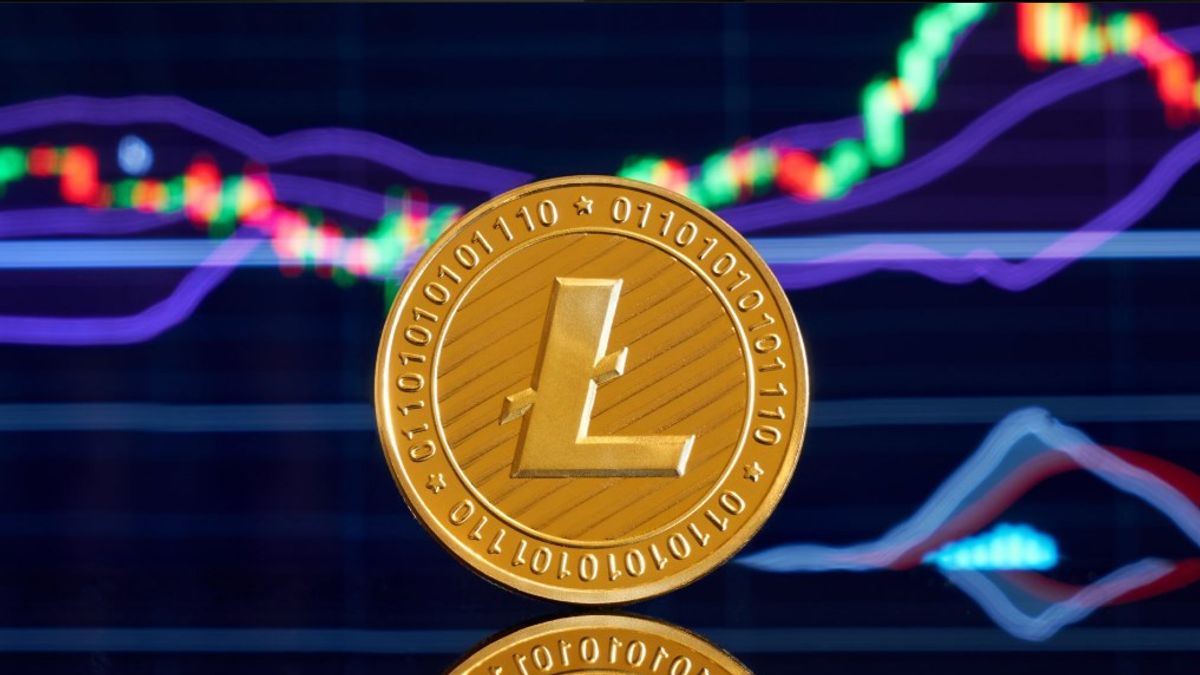Here is Litecoin’s Next Big Price Target According to Veteran Trader
14.08.2024 16:30 2 min. read Alexander Stefanov
John Bollinger, renowned financial trader and creator of the widely recognized and used "Bollinger bands" indicator, recently shared his insights on the crypto market, focusing on Litecoin in particular.
Bollinger shared a graph of the LTC price, emphasizing that “a picture is worth a thousand words.” He used this visualization to answer his followers’ queries about his model’s stems and “Head Fakes.”
A head fake is when the price of a cryptocurrency moves in one direction (i.e. up or down), enticing traders to initiate a purchase, but then unexpectedly reverses direction.
The Bollinger band contraction occurs when the bands narrow, indicating a period of low volatility. This scenario often precedes significant price movements as the market gains momentum. Traders view this as a potential breakout point where prices can quickly rise or fall once the narrowing is over.
From the picture is worth a thousand words department. I get a lot of questions about Bollinger Band Squeezes and Head Fakes. $LTSUSDhttps://t.co/fzdLvxee8F
– John Bollinger (@bbands) August 13, 2024
Head Fakes, on the other hand, occur when the market appears to break in one direction but quickly reverses, which can lead to losses for traders who react to the initial move without confirmation.
The chart of the price of Litecoin that Bollinger shared illustrates this concept well. In late July, Bollinger’s bars on the LTC chart began to converge, signaling a contraction.
During this period, the price briefly hovered above the upper band, but quickly fell back below it, causing the value of the cryptocurrency to drop. As a consequence, the bands began to drift apart as volatility increased.
After bottoming out near the lower band, Litecoin recovered to around $63 amid the broader market recovery. According to Bollinger’s analysis, the next key level for Litecoin is $65. If LTC breaks above that point, altcoin could retest the upper band, currently at $75.
-
1
Most Trending Cryptocurrencies on CoinGecko After Bitcoin’s New ATH
11.07.2025 19:00 2 min. read -
2
Altcoin Supercycle? Analysts Signal ‘Banana Zone 2.0’ as Market Erupts
13.07.2025 19:00 2 min. read -
3
XRP Hits All-time High Amid Regulatory Breakthrough and Whale Surge
18.07.2025 11:14 2 min. read -
4
Ethereum Tops $3,285 for First Time Since January
17.07.2025 7:00 1 min. read -
5
Trump’s Truth Social to Launch Utility Token for Subscribers
10.07.2025 18:30 1 min. read
Binance to Launch PlaysOut (PLAY) Trading on July 31 With Airdrop
Binance has officially announced the launch of PlaysOut (PLAY), a new token debuting on Binance Alpha, with trading scheduled to begin on July 31, 2025, at 08:00 UTC.
Cboe BZX Files for Injective-based ETF Alongside Solana Fund Proposal
The Cboe BZX Exchange has submitted a filing with the U.S. Securities and Exchange Commission (SEC) seeking approval for a new exchange-traded fund (ETF) that would track Injective’s native token (INJ).
Bernstein Warns Ethereum Treasuries Pose New Risks
Bernstein has flagged growing risks in Ethereum’s corporate adoption trend, cautioning that the rise of “ETH treasuries” could reshape the network’s supply and risk dynamics.
Interactive Brokers Weighs Stablecoin Launch
Interactive Brokers, one of the world’s largest online brokerage platforms, is exploring the possibility of issuing its own stablecoin, signaling a potential expansion into blockchain-driven financial infrastructure as U.S. crypto regulation begins to ease.
-
1
Most Trending Cryptocurrencies on CoinGecko After Bitcoin’s New ATH
11.07.2025 19:00 2 min. read -
2
Altcoin Supercycle? Analysts Signal ‘Banana Zone 2.0’ as Market Erupts
13.07.2025 19:00 2 min. read -
3
XRP Hits All-time High Amid Regulatory Breakthrough and Whale Surge
18.07.2025 11:14 2 min. read -
4
Ethereum Tops $3,285 for First Time Since January
17.07.2025 7:00 1 min. read -
5
Trump’s Truth Social to Launch Utility Token for Subscribers
10.07.2025 18:30 1 min. read


